On Monday, May 6th, 1974, serial killer Ted Bundy abducted college student Roberta Kathleen Parks from Oregon State University in Corvallis.
Nine months later, a search team discovered her skull and jawbone in a wooded area on Taylor Mountain, near Seattle.
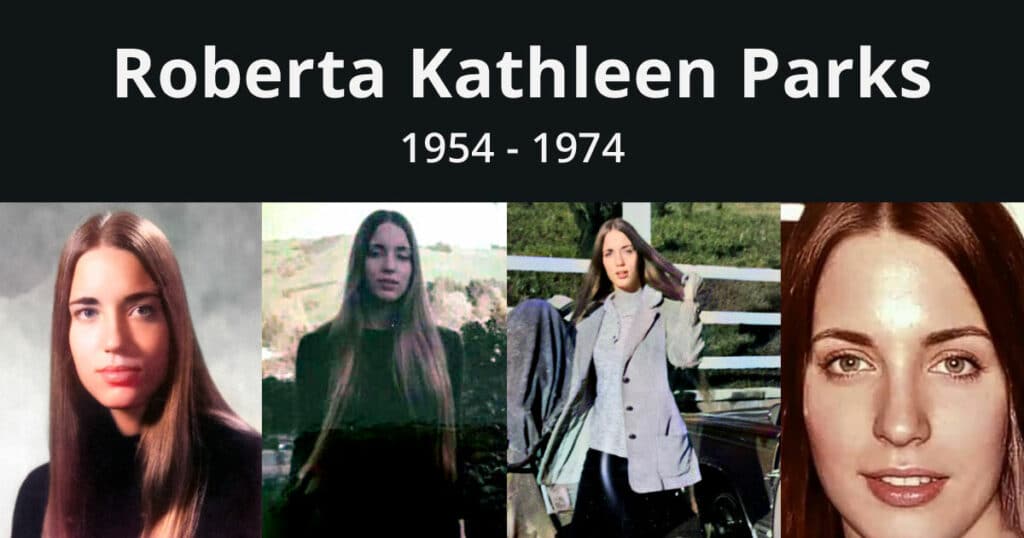
Roberta Kathleen Parks was a 20-year-old university student from Lafayette, California. She was 5′ 7″ and 125 pounds with waist-long brown hair. Although she was majoring in religious studies, she still wasn’t sure what she wanted to do with her life.
Up until the discovery at Taylor Mountain, the media typically avoided grouping Parks in with the other missing girls.
The other women had been abducted from the Washington State area, while Parks disappeared from a university that was 250 miles away.
The distance between Parks and the other victims made the connection unconvincing. There were also lingering questions about whether she had run away or not.
According to King County detective Robert Keppel, he found it difficult to believe that the unidentified killer calling himself “Ted” would venture so far south.
Consequently, the discovery of Park’s skull among the remains of Brenda Ball, Susan Rancourt, and Lynda Healy came somewhat as a surprise.

Her skull was discovered in a forested area on Taylor Mountain.
Up until that point, they believed that the killer was focusing his efforts on the Seattle area. However, it was evident that “Ted” was willing to travel outside of his comfort zone.
Parks was unhappy at the time of her disappearance
At the time of her disappearance, Parks was unhappy.
There was conflict with her parents, she was anxious about her future career, and her relationship with her boyfriend was on the verge of collapse.
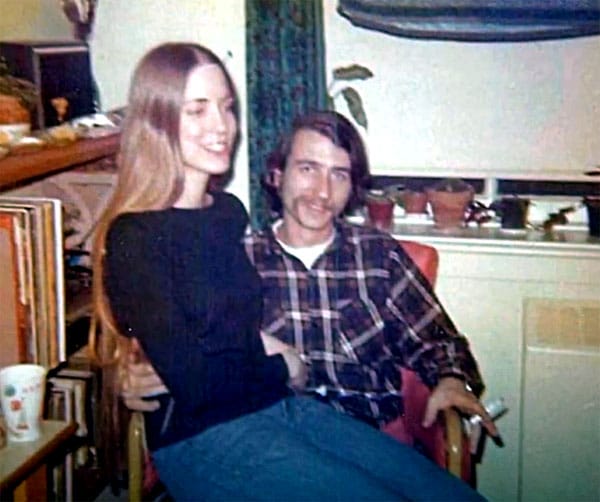
A photo of Parks and her boyfriend, Christy McPhee, during happier times. Police reports indicate that her parents did not approve of their relationship.
Park’s boyfriend, Christy, was working as a scuba diving instructor in Louisiana. In the months leading up to her disappearance, the couple were at odds with each other over the direction of their relationship.
Christy was pushing for marriage. Parks, however, wasn’t ready for such a huge commitment and intended to break things off.
Her father suffered a heart attack
On the day that she vanished, things got even worse.
That day, Parks received news from her sister in California that their father, Charles, had suffered a heart attack.
This plagued her with guilt, as two days beforehand, she had argued with him over the phone.
Later that day, she received a second call. This time, the news was much more positive, as the doctors felt it was likely that their father would survive.
Although this second call undoubtedly raised Park’s mood, it is likely that she still felt anxious and emotionally drained.
Disappearance
The details about Park’s abduction are scant and somewhat speculative.
However, there are two things that we know for certain:
- She was having an extremely emotional and stressful day on May 6th.
- She was last seen walking between her dorm room at Sackett Hall and the commons area of the Memorial Union building.
While she was en route to the Memorial Union building, she stopped to talk to her dorm mate, Lorraine Fargo. Following a quick conversation about an upcoming Spanish test, Parks told Fargo that she was going to get a hot fudge sundae.
This was the last time that anyone saw her alive.

A Google Street View image of Sackett Hall from November, 2020. Her family and friends called her Kathy.
Later on that night, Lorraine noticed that Parks had still not returned to her dorm at Sackett Hall. She found this odd because Parks was a pretty responsible student. Furthermore, everyone had to be back at their dorms by 2AM unless they had a prior agreement with their Resident Advisor.
While Fargo found her absence strange, she didn’t suspect that something serious had happened.
She never returned
The following morning, things became serious.
Parks had still not returned.
Initially, her roommates were reluctant to report her absence, as they didn’t want to get her into trouble. At the time, they assumed that she might be offsite and in need of some headspace.
However, worry soon got the better of them. Although Seattle was 250 miles away, they were well aware that young women had started going missing.
Consequently, they decided to contact their resident advisor and raise the alarm.
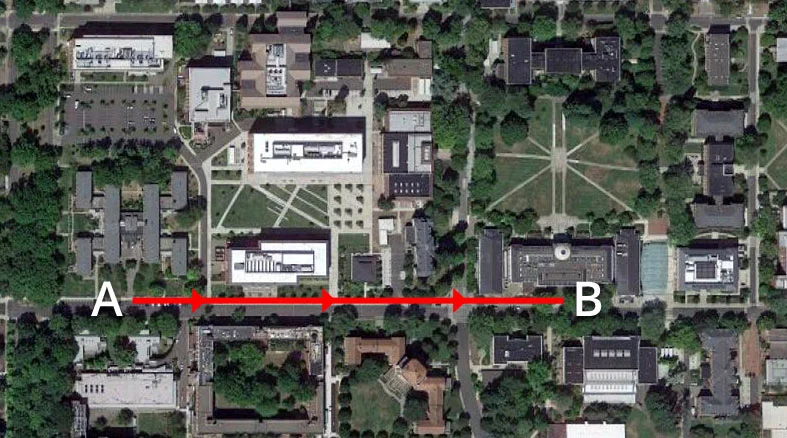
This is the route that she took that night. The distance between Sackett Hall and Memorial Union is roughly 350 yards.
Bundy’s “confession”
While Bundy was in prison, he agreed to speak about the murders with author Stephen Michaud.
To avoid incriminating himself, he spoke in the third person.
This format allowed him to speak about the crimes while maintaining his innocence.
For example, instead of saying, “I hit her with a crowbar,” Bundy would say, “The killer may have hit her with a crowbar.”
Discerning the truthfulness of these “pseudo-confessions” is challenging, as they were presented as speculative theories about “the real killer.”
He likely altered parts to protect himself or mislead investigators. He may have also used these conversations to make himself seem more sophisticated and intelligent.
Bundy was a malignant narcissist. Therefore, he would have felt psychologically compelled to convince others of his “brilliance.”
Consequently, we need to be highly dubious of these “confessions.”
Bundy’s “recollection” of the Parks abduction
If we do take Bundy’s third-person “theories” as fact, then it means that he saw Parks sitting alone in the cafeteria and sat down beside her.
According to Bundy, she was lonely and depressed.
After some casual conversation, he convinced her to accompany him to Corvallis for some food and drinks.
In Bundy’s opinion, there were two possible reasons why she may have accepted his invitation:
- He was convincing enough.
- She wanted to take her mind off things.
Once they were in the car, Bundy claimed that he needed to collect his thesis from a nearby typist. At that point, he drove to the closest secluded area he could find and immediately attacked Parks.
Doubts
There are two lingering doubts about Bundy’s story.
One of Parks’ friends said that she was very quick to reject advances from other men. Although she was going through a stressful period, there is no indication that she would have willingly left the campus with a stranger.
Furthermore, when she met Fargo outside the Memorial Union building, it was nearly 11pm, and the cafeteria’s closing time was fast approaching. Therefore, one must ask if Bundy had enough time to approach Parks, strike up a conversation, and persuade her to leave with him.
His remarks about Parks seeming depressed might sound convincing. However, the interviews with Michaud took place in 1980. By that point, the media had widely publicized the murders and each victim’s background story.
While in prison, Bundy had ample time to read various newspapers and consume details about the crimes.
Parks was having mental health issues
It appears as though Parks’ mental health struggles may have clouded the investigation and led authorities to suspect that she had run away or committed suicide.
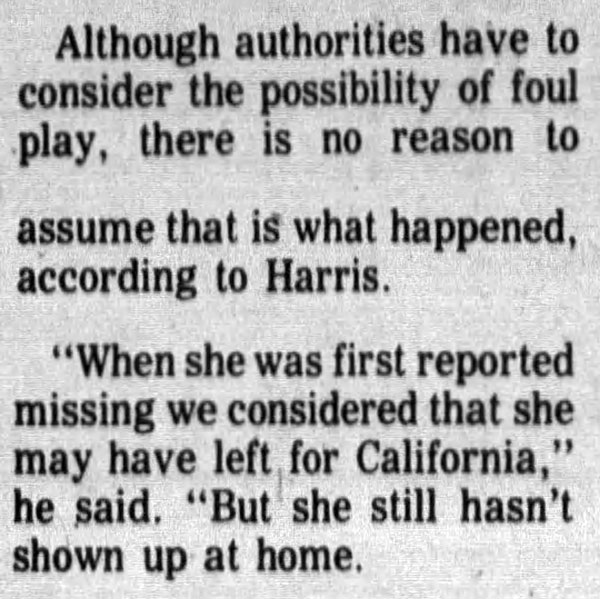
Initially, the chief investigator for OSU campus security, Bill Harris, believed that she may have left for California. However, the weeks soon passed by, and there was still no sign of Parks.
Various health professionals said that she had mental health issues.
Psychiatric social worker Georgine Thompson said that the 20-year-old was unpredictable and hesitant to engage with therapy. She also stated her belief that Parks was “capable of running off” and that she may have been having suicidal tendencies.
Dr. Peter Winters told investigators that Parks was angry, nervous, emotional, depressed, and at risk of suicide.
Other doctors also echoed similar sentiments. One even recalled how she had talked about “getting away” at one point.
All in all, it appears as though Parks was in a pretty dark place.
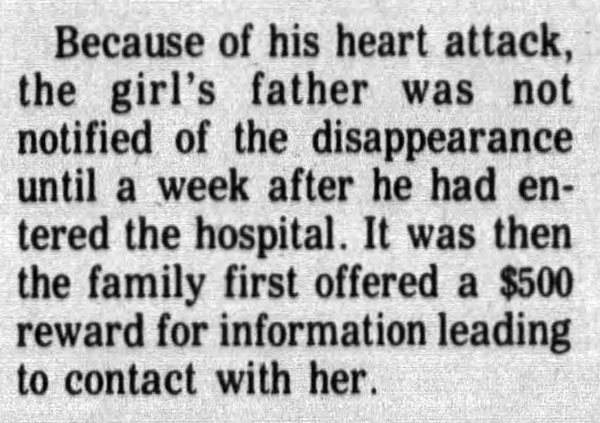
The family did not tell Charles about her disappearance until a week later.
If Bundy was telling the truth about Parks, then it means that he callously murdered a vulnerable young woman who had confided her problems in him just moments beforehand.
The likely chain of events
It is the author’s opinion that Bundy didn’t coax her into going to a bar. Given the known facts about his other abductions, it is far more likely that he used his trusty “injury ruse.”
That night, he would have loaded his Volkswagen Bug with the following:
- A crowbar to incapacitate the victim.
- Handcuffs to keep them restrained.
- Something to convince the target that he was injured, such as a pair of crutches or a fake sling. An item that he could request help carrying. For example, a briefcase or a pile of books.
Once his “kit” was loaded, he drove to the campus, knowing it had a significant amount of foot traffic from college-aged women. His decision to target Oregon State University was born out of necessity. Things were getting too “hot” in Seattle, as people had started noticing the disturbing trend of missing coeds.
Consequently, he felt compelled to stray outside his comfort zone.
After arriving at the campus, he identified locations that had enough footfall. In this case, it was the area around the Memorial Union building.
He then looked for a secluded and poorly lit spot to park his car. A place that was slightly out of the way but relatively close to the building. A target isn’t going to walk too far, and each moment he spends in their company raises his exposure.
Once he parked his Volkswagen, he hid the crowbar on the ground, just behind the car.
Having set up the ambush, Bundy proceeded to put on his fake sling or grab his crutches.
Upon reaching the Memorial Union building, he likely spent time “trolling” around the exterior, hoping to spot a lone woman. At the time, he would have been holding his briefcase or books.
Shortly after 11pm, he saw Parks walking by herself and immediately headed in her direction. After getting close enough, he pretended to drop his briefcase.
Like most people in that situation, Parks likely offered her assistance.
However, when she picked up the briefcase and tried to hand it to him, he politely asked her if she could help him carry it back to his vehicle.
If she expressed any doubts or made excuses, he politely persisted by highlighting his injury and assuring her that it would only take a moment.
“It’s just around the corner.”
Evidently, Parks agreed.
While they were en route, Bundy made small talk, perhaps explaining how he got his “injury.”
Once they reached the Volkswagen, he would have asked her to place the briefcase on one of the seats. He likely specified the back seat, as that requires more effort when you’re dealing with a two-door vehicle.
As Parks was leaning into the car, Bundy grabbed the crowbar off the ground and then struck her over the head. To quickly knock her unconscious, he knew that he needed to be quick and forceful. If the blow was too light, she might scream or resist.
Following the ambush, Bundy lifted Parks into the passenger footwell, handcuffed her, and quickly left the scene.
What happened next is unclear. He either drove to a nearby secluded spot and murdered her, or he waited until they got to Taylor Mountain.
There are arguments for and against.
Either way, he drove five hours with Parks in his vehicle before he eventually dumped her body on the side of a remote mountain, hundreds of miles away from her family.